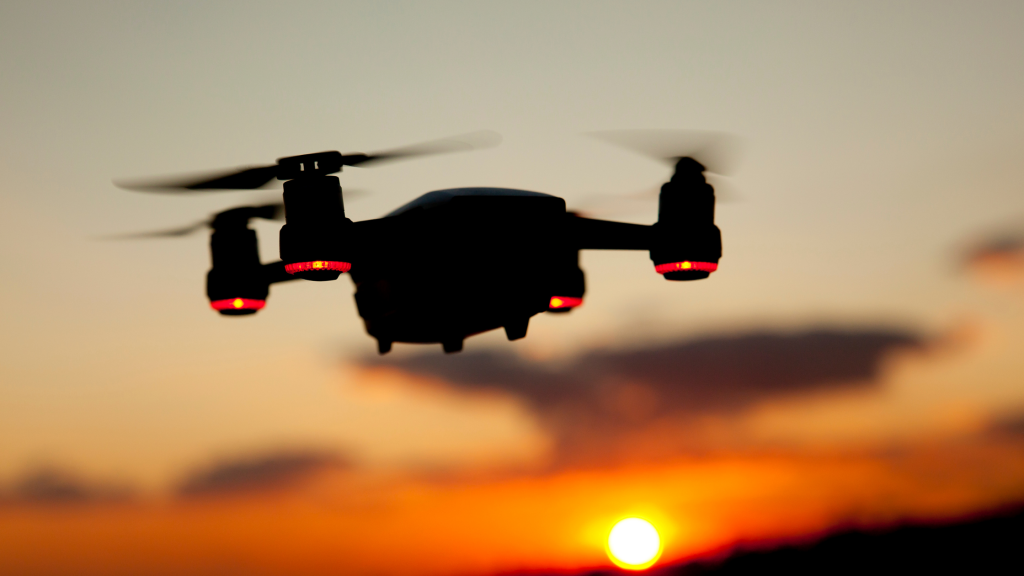Government has taken several steps to give a much needed push to the drone industry. The rules governing the industry have changed. Manufacturers are also incentivised monetarily, too
India’s unmanned aerial vehicle or drone industry is expected to be on a cruise mode over the next few years. With an enthusiastic private sector and unprecedented government support, it is now ready to take flight.
The government aims to make India a global drone hub by 2030. From a nearly Rs 100 crore industry at present, the sector is expected to see exponential growth over the next four years. The Ministry of Civil Aviation has estimated it to become worth Rs 12,000-15,000 crore by 2026.
India has been stressing on strengthening the domestic manufacturing sector and has identified sectors to give them a much-needed push. The UAV or drone industry is strongly into its radar as the government wants to leverage the potential right from its infancy.
According to a report published by KPMG, India accounts for 22 per cent of the global drone imports and remains a major importer. A lion share f it is used for military purposes. The opportunity is immense in military and civilian works. With the kind of market that we have, the commercial use is an open field for the industry to latch on. It is expected that the commercial use will out-do the military use in a very short time.
Government Push
The union government has liberalized rules governing this sector. It is with a view to promote ease of doing business. The Drone Rules, 2021 has done away with old anarchic regulations that were holding the industry back. The rules have been designed to revamp the entire ecosystem.
Government abolished the requirement for a drone pilot’s license in February 2022. Prior to this, in September 2021, it had opened 90 per cent of Indian airspace as a green zone for drones flying up to 400 feet.
It has also directed different ministries to find ways to boost indigenous demand for drone and as we speak a total of 12 central ministries are now involved in trying to boosting the demand.
In its budget 2022 statement, Finance Minister Nirmala Sitharaman announced the Drone Shakti with the goal of facilitating and promoting drones as a service through companies. The expectations are only building-up as we move towards Budget 2023.
In order to promote the use of kisan drones, the GOI is providing financial incentives. For instance, Farmers Producers Organisations can receive up to 75 per cent subsidy of the cost of an agricultural drone.
The government has also smartly tweaked its drone import policy to aid the local industry. In February 2022, the government announced that it had restricted the import of foreign drones while allowing the import of drone components.
Another important push has been bringing it under the ambit of Production Linked Incentive (PLI) scheme where the government has earmarked Rs 120 crore for helping drone manufacturers. The monetary assistance will be extended over the next three years.
Opportunities
Still in its nascent stage, the sector promises exponential growth opportunities. The same KPMG report underlines its scope and which is not limited to delivery of goods and services or data collection. It can also be utilised to offer insights to businesses across industries through advance technology, the report said.
With cutting edge technology and innovation drones can be used to improve cost efficiencies of companies. It can be used for data collection and mapping purposes removing obsolete and redundant manual ways.
A step in this direction is already underway. The government is pushing start-ups to facilitate drone-as-a service. This will enable companies to use a drone service provider for its operations without having the need to invest in drone equipment, software or pilots.
Indian IT companies are using the drone facilities to design software solutions based on data collection and mapping. As the industry grows, the IT sector will also serve the sector which means more business for it.
Drones can be instrumental in areas where the nature of work is hazardous or dangerous.
Last but not the least, drone shows can be a huge attraction for public in general, a glimpse of which we witnessed in a special drone show at Kartavya Path in September.
Global Landscape
US and China have made huge progress in this regard and have been giving a much needed support in the form of regulatory framework to take their respective industry further. Currently, the emphasis is on simplifying rules pertaining to BVLOS or beyond visible line of sight operations. These rules govern operations of an unmanned aircraft without a remote pilot while maintaining a visual line of sight on the UAVs.
BVLOS will improve delivery services and boost demand for delivery drones.
The report by KPMG said that China has a maximum 400-foot above-ground level limit, with UAS operators required to buy insurance for UAS covering liability for third parties on the ground. The airspeed of the UAS is limited to 100 kilometers per hour. Also, the UAS operators are required to record the flight data in a real-time online systems.
The US has also liberalised government policies resulting in significant investments. The world’s largest economy has recorded more than 900 startups and big corporates within the drone industry.
Jobs
While the sector will create jobs, the nature of job remains a highly specialized one. The above KPMG report estimates that demand for drone pilots will be to the tune of 1 lakh in coming years. Then, there will requirement for more engineers as well.

